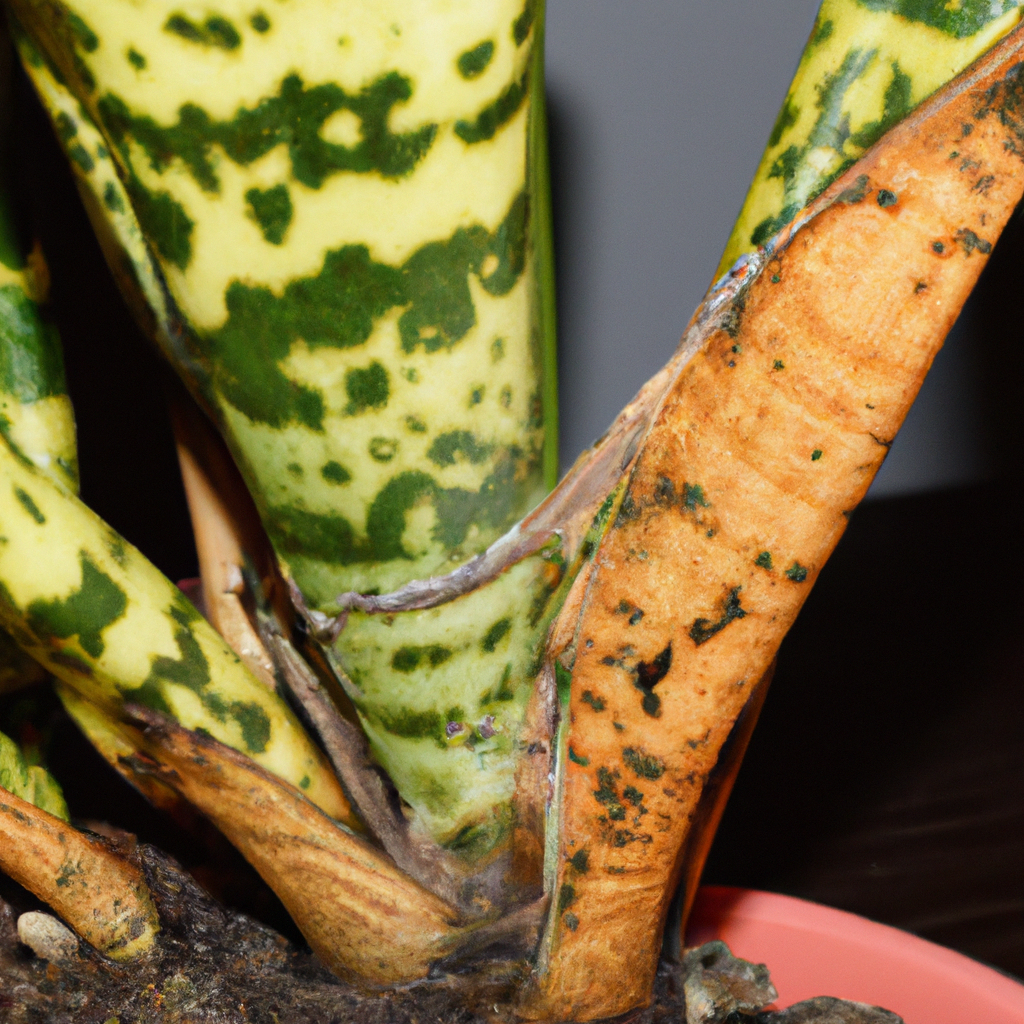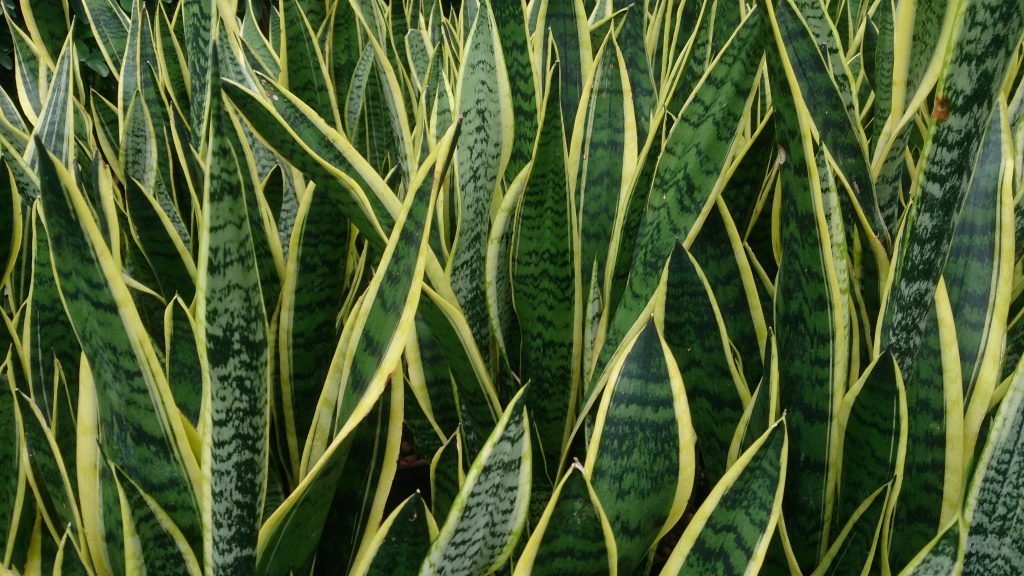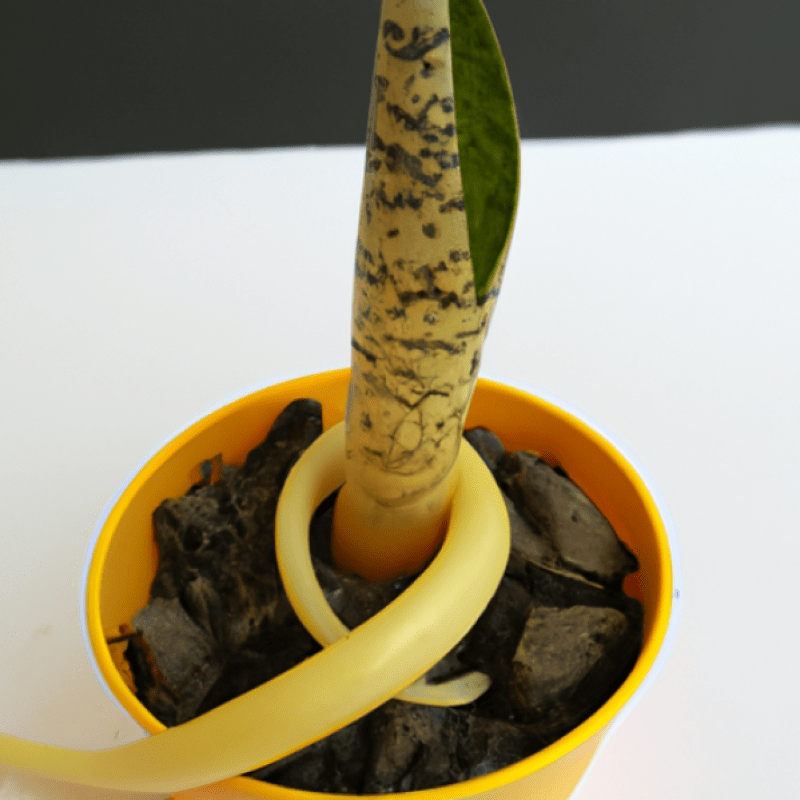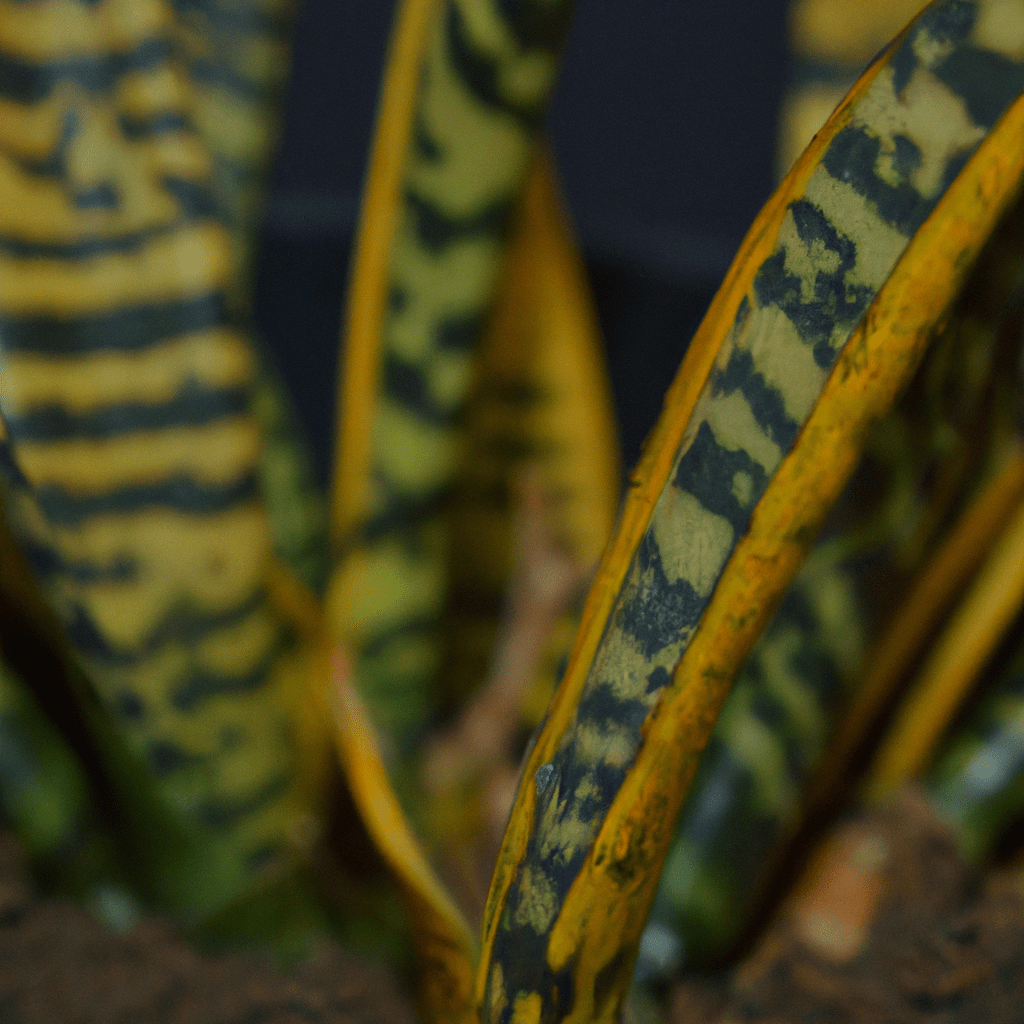Hey there, all you plant lovers and enthusiasts out there! Are you a proud owner of a Sansevieria Fischeri? Well, if you are, then congratulations on choosing one of the most low-maintenance and hardy houseplants out there! However, even the toughest plants can run into a few problems here and there. So, in this article, we’ll be diving into some of the common issues that Sansevieria Fischeri faces and how to tackle them like a pro. So put on your gardening gloves, grab your secateurs, and let’s get started!
1. What are common problems with Sansevieria Fischeri?
Sansevieria Fischeri, commonly known as Snake Plant, is a popular houseplant due to its hardy nature and air-purifying qualities. However, it is prone to certain problems that may affect its growth and health. Some of the common problems with Sansevieria Fischeri include:
1. Root Rot: Overwatering or poor drainage can lead to root rot, which causes the roots to turn brown or black and mushy. This can lead to wilting and yellowing of the leaves.
2. Pests: Spider mites, mealybugs, and scale insects are common pests that can infest Sansevieria Fischeri. They can cause discolored and distorted leaves, as well as stunted growth.
3. Sunburn: While Sansevieria Fischeri prefers bright, indirect light, too much direct sunlight can lead to scorched leaves.
4. Soil Issues: Poor soil quality, lack of nutrients, and pH imbalances can affect the plant’s growth and health. This can cause yellowing, stunted growth, and leaf drop.
To avoid these problems, it is essential to provide the right growing conditions, including well-draining soil, adequate light, and proper watering. Regular inspection and treatment for pests can also help keep Sansevieria Fischeri healthy and thriving.
2. How do I identify pests on Sansevieria Fischeri?
To identify pests on Sansevieria Fischeri, a thorough inspection of the plant is necessary. Look for signs of damage to leaves, stem, and roots. Some pests like spider mites, mealybugs, and scale insects are too small to be seen with the naked eye. Thus, use a magnifying glass to inspect the plant’s leaves for small webs, white cotton-like clusters, and small bumps. Also, inspect the foliage for yellowing, wilting, and holes. These can be symptoms of pest infestation. In addition, check the soil for any signs of pests such as larvae or eggs.
Prevention is better than cure, and it is essential to maintain a healthy growth environment for Sansevieria Fischeri to prevent pest infestation. Keep the plant away from other infected plants, provide adequate light, water, and nutrients, and maintain proper humidity. Use natural remedies or insecticides to control pest infestation, and always follow the manufacturer’s instructions when using pesticides. Regular inspection and maintenance are key to identifying and controlling pests on Sansevieria Fischeri.
3. What causes yellowing of Sansevieria Fischeri leaves?
The yellowing of Sansevieria Fischeri leaves can be caused by a variety of factors. Some of the possible causes are:
- Overwatering: Excessive watering can lead to root rot, which in turn can cause the leaves to turn yellow.
- Underwatering: Insufficient watering can cause the leaves to become dry and crispy, eventually turning yellow.
- Temperature stress: Exposure to extreme temperatures, such as cold drafts or high heat, can cause the leaves to yellow and die.
- Pest infestation: Some pests, such as spider mites and mealybugs, can cause yellowing of the leaves.
- Fungal or bacterial infections: These can also lead to yellowing of the leaves, often accompanied by wilting and other symptoms.
To prevent yellowing of Sansevieria Fischeri leaves, it is important to ensure proper watering and avoid exposing the plant to extreme temperatures. Regular inspections for pests and signs of disease can also help catch and treat any problems early.
4. How do I prevent root rot in Sansevieria Fischeri?
Root rot in Sansevieria Fischeri can be prevented by following the appropriate care guidelines. Here are some tips to prevent root rot:
- Ensure that the soil is well-draining. Use a pot with drainage holes and mix the soil with perlite or sand to improve drainage.
- Avoid overwatering. Allow the soil to dry out between waterings and do not let the plant sit in standing water.
- Use a suitable container. Choose a container with the appropriate size for the plant and avoid containers that are too large and hold too much water.
- Provide adequate light. Sansevieria Fischeri prefers bright, indirect light. Too much shade can lead to damp soil and root rot.
- Monitor humidity levels. High humidity can promote fungal growth, so ensure that the area around the plant is well-ventilated.
- Inspect for signs of root rot. If the plant shows signs of root rot, such as wilting or yellowing leaves, remove it from the soil and trim away any affected roots.
By following these tips and maintaining appropriate care, you can prevent root rot in Sansevieria Fischeri and ensure the health and longevity of the plant.
5. What are the signs of overwatering Sansevieria Fischeri?
Sansevieria Fischeri is a succulent plant that can withstand drought and prefers less watering. Signs of overwatering in this plant can be observed by looking for the following indications:
- Yellowing or browning of the leaves
- Soft and mushy leaves or stem
- Root rot, seen by blackening or mushiness of the roots
- Foul odor emanating from the soil
- Drooping of the leaves or tilting of the plant
It is crucial to avoid overwatering Sansevieria Fischeri to prevent these signs from occurring. To ensure the healthy growth of the plant, a well-draining soil mix must be used. Further, the plant must be placed in a suitable area with adequate sunlight and good air circulation. The frequency of watering must also be reduced and done only when the soil is dry to the touch. It is essential to regulate the watering based on the weather and surrounding conditions to prevent overwatering.
6. How do I propagate Sansevieria Fischeri?
Propagating Sansevieria Fischeri can be achieved through various techniques, including division, leaf cuttings, and offsets. Dividing the plant is the most straightforward method, but requires a bit of caution to prevent damage to the roots. It involves the separation of the parent plant into smaller sections, each with their own roots and leaves. Leaf cuttings are another effective technique, where individual leaves are cut and left to dry for a few days before being planted in well-draining soil. Offsets, or baby plants that grow from the parent plant, can also be gently removed and replanted in their own pots once they have some roots. Regardless of the method chosen, it is important to use a well-draining soil mix and to keep the newly propagated plants in a warm, humid environment until they are well established. Sansevieria Fischeri can be a beautiful addition to any plant collection, and with the right propagation methods, it can be easily multiplied to share with others.
7. How often should I fertilize Sansevieria Fischeri?
Sansevieria Fischeri is a hardy plant that requires minimal maintenance and adequate care for optimal growth. Fertilizing Sansevieria Fischeri should be done cautiously to prevent overfeeding and damaging the plant. A few tips to keep in mind while fertilizing this species are:
– Sansevieria Fischeri should be fertilized once every 3-4 months during the growing season, which is typically from spring to late summer.
– Use balanced fertilizer (10-10-10) or specifically formulated Sansevieria fertilizer to ensure adequate nutrient supply.
– Dilute the fertilizer to half strength to prevent burning the plant’s roots.
– Apply the fertilizer to damp soil, preferably after watering, to aid in nutrient absorption.
– Avoid fertilizing during the dormant season as it can cause stress to the plant.
Proper fertilization, along with other care measures such as appropriate watering and adequate lighting, will ensure healthy growth and vibrant foliage in Sansevieria Fischeri.
8. What are the ideal light conditions for Sansevieria Fischeri?
Sansevieria Fischeri thrives in bright indirect light, but it can also tolerate low light conditions. However, direct sunlight should be avoided as it can scorch the leaves. The plant can be placed near a north-facing window or in a partially shaded area. If grown indoors, it should be placed a few feet away from a sunny window or filtered with a sheer curtain. Sansevieria Fischeri can also be grown under artificial lighting, such as fluorescent or LED lights, for 12-14 hours a day. The plant prefers temperatures between 60-80°F and moderate to high humidity. It is important to avoid overwatering as the plant can be susceptible to root rot. Sansevieria Fischeri can tolerate drought and prefers well-draining soil. Fertilization should be done sparingly, about once a month during the growing season.
9. How do I prune Sansevieria Fischeri?
Pruning Sansevieria Fischeri requires careful consideration of several factors, including the plant’s growth habits and the desired shape and size. Begin by identifying any damaged or diseased leaves or stems, which should be removed with sharp, clean pruning shears. Next, consider the overall shape of the plant and any areas that need to be thinned or reshaped. Prune selectively, removing only the necessary portions of the plant to maintain its health and appearance. Be mindful of the timing of pruning, as Sansevieria Fischeri may respond differently depending on the season or growth cycle. Finally, consider the plant’s environment and adjust pruning practices accordingly, taking into account factors such as light exposure, soil moisture, and air circulation. With careful attention to detail and proper pruning techniques, Sansevieria Fischeri can be maintained as a healthy and attractive ornamental plant.
10. Can Sansevieria Fischeri survive in low-light conditions?
Sansevieria Fischeri is a resilient plant that can adapt to a variety of lighting conditions. However, while it can survive in low-light environments, it may not thrive as well as it would in brighter conditions. This is because Sansevieria Fischeri relies on photosynthesis to produce energy, and low-light conditions can limit its ability to do so.
If you are looking to grow Sansevieria Fischeri in low-light conditions, there are a few things you can do to help it thrive. These include:
– Choosing a location with indirect light: While Sansevieria Fischeri can survive in low-light conditions, it still needs some light to grow. Placing it in a location that receives indirect light (such as near a window that doesn’t receive direct sunlight) can help it get the light it needs without being exposed to too much direct sunlight.
– Using artificial light: If you don’t have a location with enough natural light, you can use artificial light to supplement your Sansevieria Fischeri’s lighting needs. LED grow lights can be a good option for this.
- Providing proper care: No matter what lighting conditions your Sansevieria Fischeri is in, it needs proper care to thrive. This includes regular watering, well-draining soil, and occasional fertilization.
And there you have it, folks! Sansevieria Fischeri may be tough as nails, but even the hardiest plants can encounter a few hiccups along the way. From overwatering to pests, these common problems can be easily avoided with a little TLC and some good old-fashioned plant care knowledge. So next time you’re tending to your Sansevieria Fischeri, remember to keep an eye out for any warning signs, and give your spiky friend the love and attention it deserves. Happy growing!



